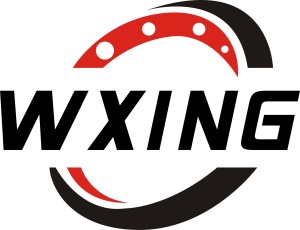PRODUCT
The ship fin stabilizer hydraulic failure diagnosis and elimination
by:Waxing
2020-11-13
The ship fin stabilizer hydraulic failure diagnosis and elimination of 2019 -
07 -
24 nlgi 's54th annual (
Guangzhou new European machinery co. , LTD. )
1 fin stabilizer of ship under the action of wind, flow, waves of roll, pitch, roll, heave, drifting and ZongPiao six degrees of freedom of movement.
Among them, especially in the most violent of roll, for ship navigation safety and the ship staff and equipment.
Fin stabilizer is to reduce the ship on the voyage of roll is equipped with a special device for the purpose.
Fin stabilizer is made up of actuator, hydraulic system and electric control device of three parts.
Among them, the hydraulic system is the most important part of the entire unit.
Although the fin stabilizer all passes through the strict test before shipment to use, the mooring test and sea trial, to ensure that the device effectively and reliably.
But still unavoidably had all sorts of faults in the actual operation, hydraulic system, especially at the early stage of its operation and a long period of running late, failure rate are higher, and fault in general and difficult to detect, causes of failure and is often machine, electricity, liquid and so on various factors are intertwined.
As a result, the operation staff should have be experienced a failure diagnosis and elimination of fairly and ability.
2 fin stabilizer frequent faults in the operation of hydraulic fault diagnosis are: oil, the oil temperature is too high, vibration, noise, etc.
This a few such failure sometimes alone, sometimes company, sometimes with other failure (
If there is a bubble in the oil with the noise produced by hydraulic pump suction air
And at the same time or slightly lagging behind.
In the operation of the hydraulic system of fin stabilizer, most of the fault is not sudden, but there are always some sign.
In the preventive inspection (
Manual monitoring)
, experienced maintenance personnel often listening with ears, visual, touch, can hunch is out of order.
(
1)
Spill fin stabilizer common external leakage fault and exclusion methods listed in table 1.
Table 1 fin stabilizer common external leakage failure and elimination method (
2)
Heat in the process of the production of this phenomenon is the system running, the cooling water flow rate is small, due to water down.
This is often in and out of the water cooler valve does not open or through small in time.
(
3)
Vibration and noise or vibration and noise from mechanical transmission parts, or from the oil hydraulic system pulse and so on.
Although the two phenomena of vibration and noise, but often go together, and causal.
Oil suction pipe, for example, the pipe joint thread pre-tightening force is insufficient, loose, air leakage in the equipment operation, produce empty noise absorption, but also accompanied by caused by the vibration of the empty and absorption.
Reversing valve commutation can cause high pressure pipeline vibration, the pipe joint is loose, vibration is produced.
Too much noise in the hydraulic system is caused by the following reasons.
Motor base, pump rack fixed screw loosening, pump and motor different heart;
Oil suction pipe cut-off valve does not open or opening is not big, oil filter blockage, oil absorption pipeline leak, the oil temperature is low or the oil temperature is too high;
No drainage opening of hydraulic pump shaft oil seal is damaged, hydraulic pump inlet flange sealing ring is damaged, hydraulic pump damage;
High pressure pipe clamp loose;
There is air in the relief valve seat dirty, system;
Electro-hydraulic valve electromagnet failure, unstable pressure control;
Oil level is low, the oil pollution.
(
4)
Does not work does not work the main reason is that 1)
Working pressure build up, work stress is low,
Rise less than the setting value)
, sometimes the pressure does not drop down after the hydraulic system can work normally, even moving parts in the original position.
2)
Flow is insufficient, or no flow, or flow rate is too large, etc. , the hydraulic work (
The hydraulic cylinder, hydraulic motor)
No action or speed is not stable, etc.
3)
Hydraulic impact.
4)
Crawl.
(
Source: the new hydraulic)
Custom message




























































































